
A Fifteenth-Century Illustrated Psalter from Latin Greece (Rahlfs 1894)
Georgi Parpulov
April 11, 2023
Almost all Greek manuscripts of the Psalter that have full-page illustrations were described by Anthony Cutler, but one kept at the Biblioteca Reale in Turin under the shelfmark Var. 484 has escaped the attention of art historians. A small book measuring some 12 × 8 cm, it was produced in three stages: ff. 6-176 carry text in fifteenth-century handwriting of the so-called "Hodegon style"; ff. 1-4 and 177-183 were added in the sixteenth century; ff. 184-324 are copied in a script datable to the seventeenth century. The oldest part of the manuscript contains the Psalms, Odes, and further devotional texts, enhanced with plenty of decorated initial letters, two ornamented headpieces (ff. 6r and 133r), and four figural miniatures (ff. 5v, 59r, 120v, 131v-132r). An excised leaf after the present-day f. 108 probably carried yet another image, now lost.
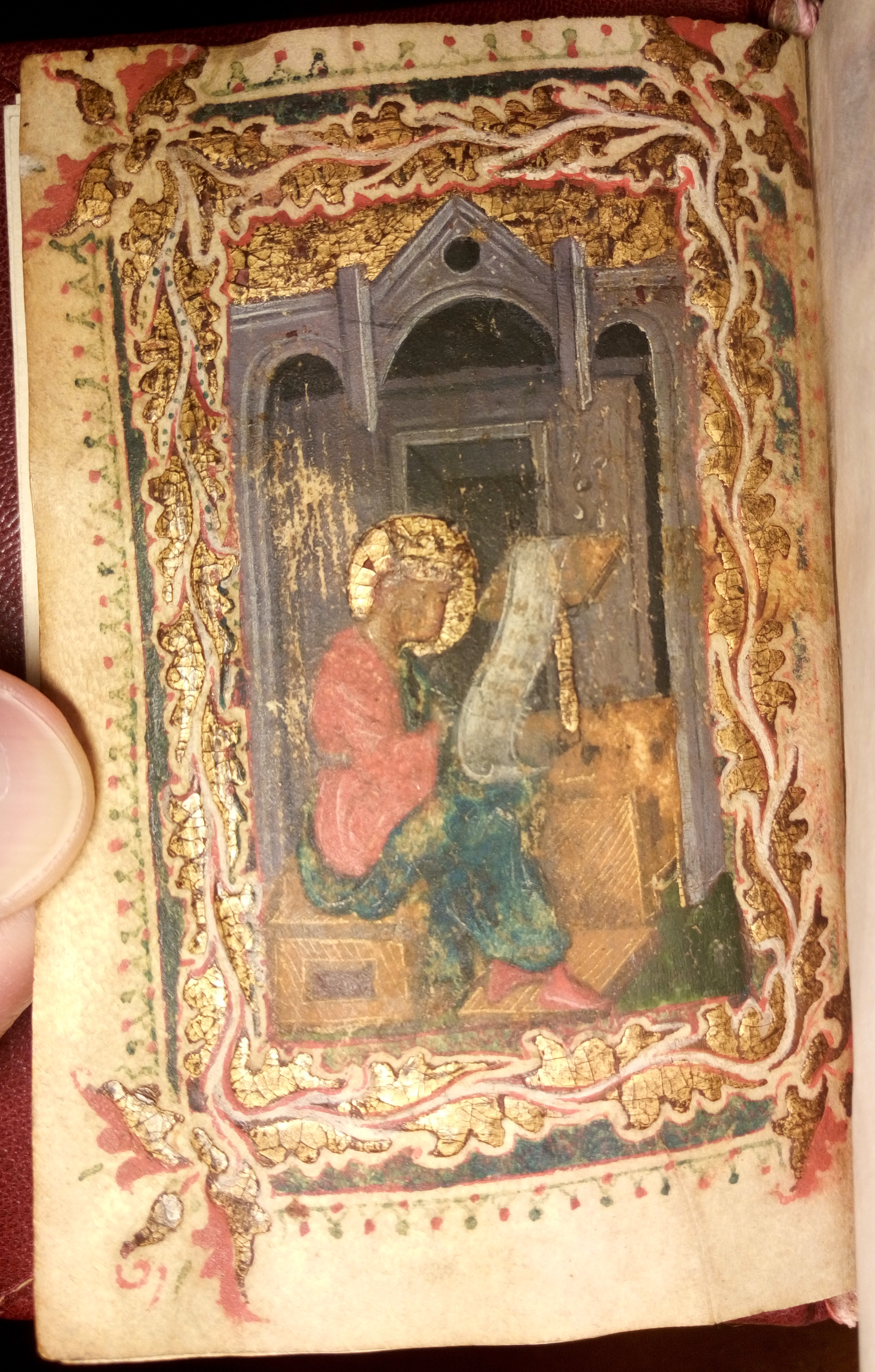
The picture that faces the beginning of the Psalter shows David, crownded and dressed in red (a traditionally royal colour), who has written upon an open scroll the first words of his first psalm: Μακάριος ἀνήρ..., "Blessed is the man...". To let us see the poet-king at work, the front wall of his room has been removed (as if on a theatre stage). The furniture, the overhanging roof, and the doorway behind are all painted in a way that suggests spatial depth by means of shadow and foreshortening. Similar images of the Psalmist are found in a mid-fifteenth century Horologion (Book of Hours): Baltimore, Walters Art Museum, W.534.
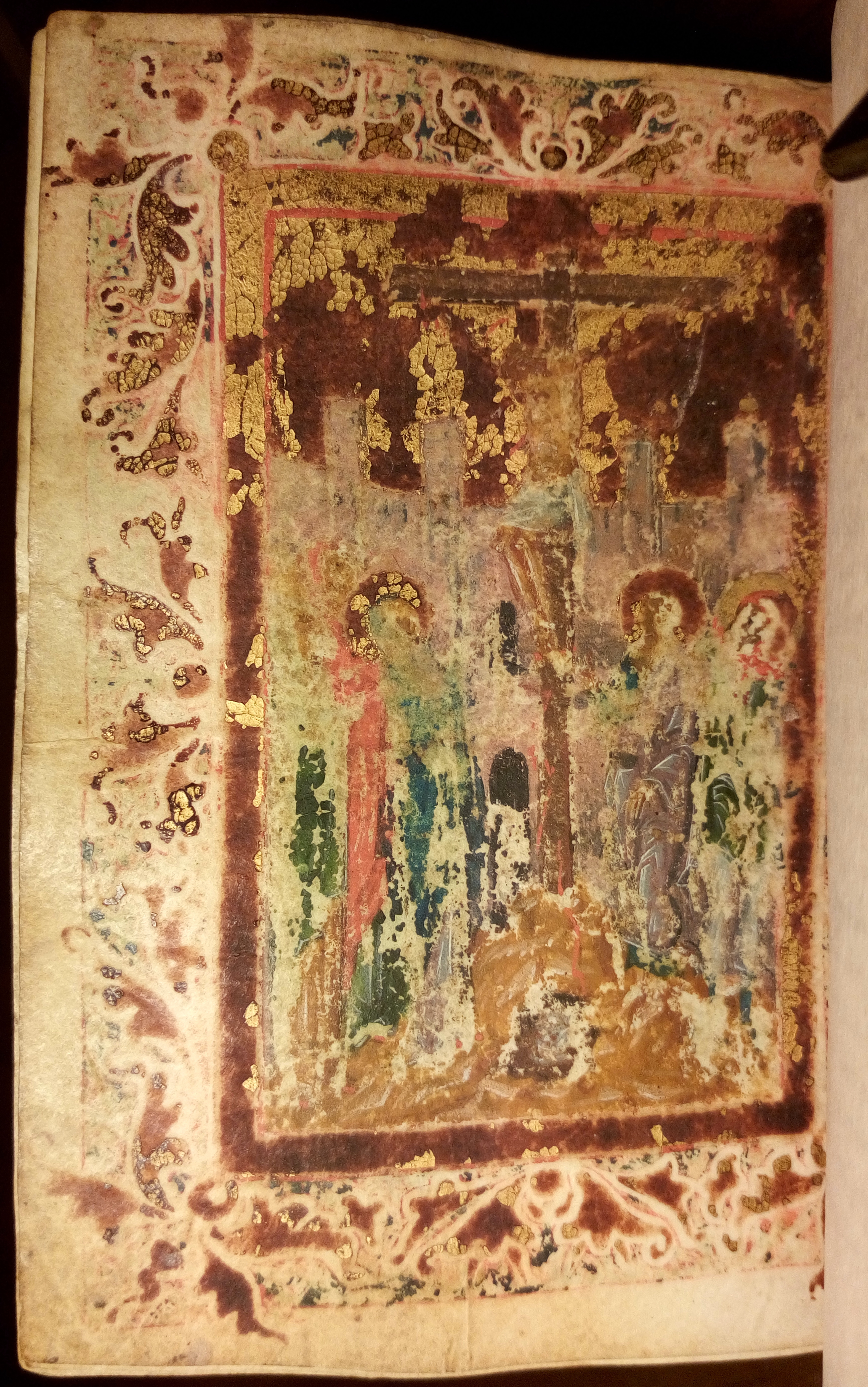
Another painting (on f. 120v) faces the beginning of a hymn addressed to Jesus Christ: Ὑμνῶ σου τὸ μακρόθυμον καὶ ἀνεξίκακον Κύριε..., "I sing your patience and suffering, Lord..." (In fact this is the peroration from a Good Friday sermon by the ninth-century writer George of Nicomedia: BHG 1139 / PG 100, 1488D-1489D). Jesus is affixed with three nails to a cross outside the city walls of Jerusalem. The cranium visible in a cave below refers to the Aramaic toponym Golgotha, "Place of the Skull". Mary, with two more women behind her, looks up at the dead body of her Son. Opposite them are St John the Evangelist and Longinus. A somewhat similar Crucifixion is painted on a fifteenth-century triptych from the Sinai Monastery of St Catherine.
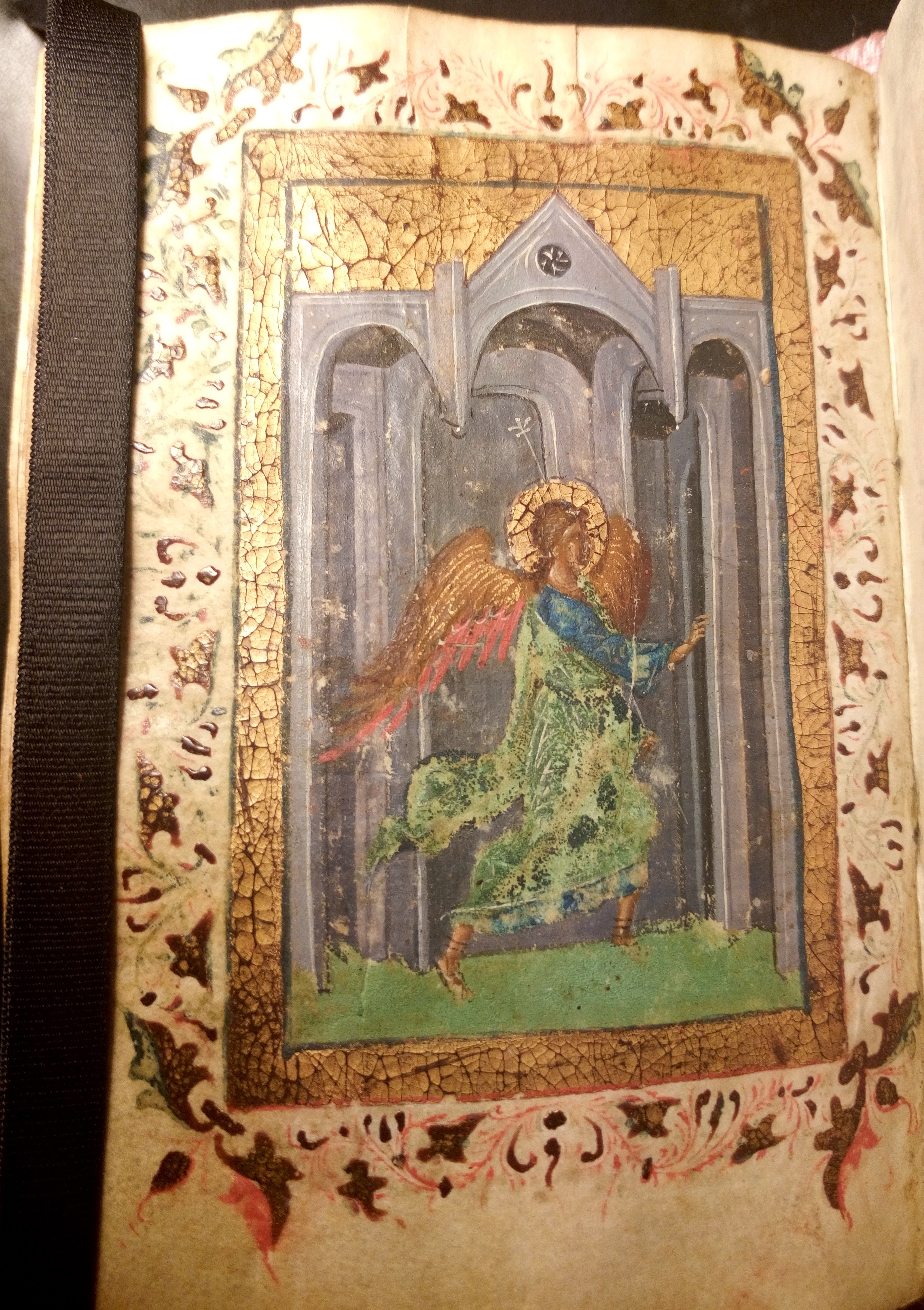
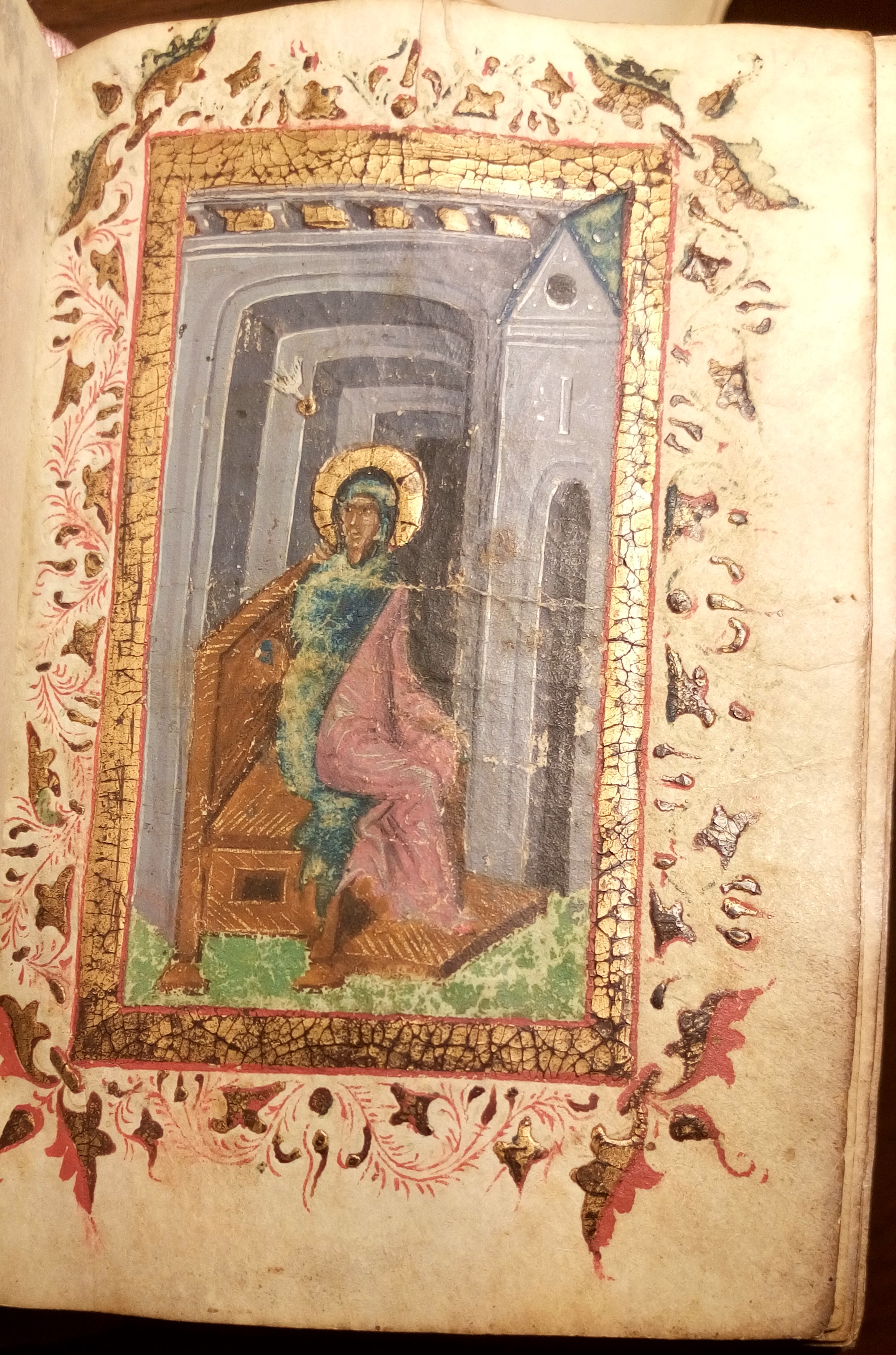
Two facing pages (ff. 131v-132r) with an Annunciation scene precede the text of the Akathistos, a hymn composed for the corresponding church feast, 25 March. The painter's volumetric treatment of the architecture and furniture here recalls the image of King David on f. 5v.
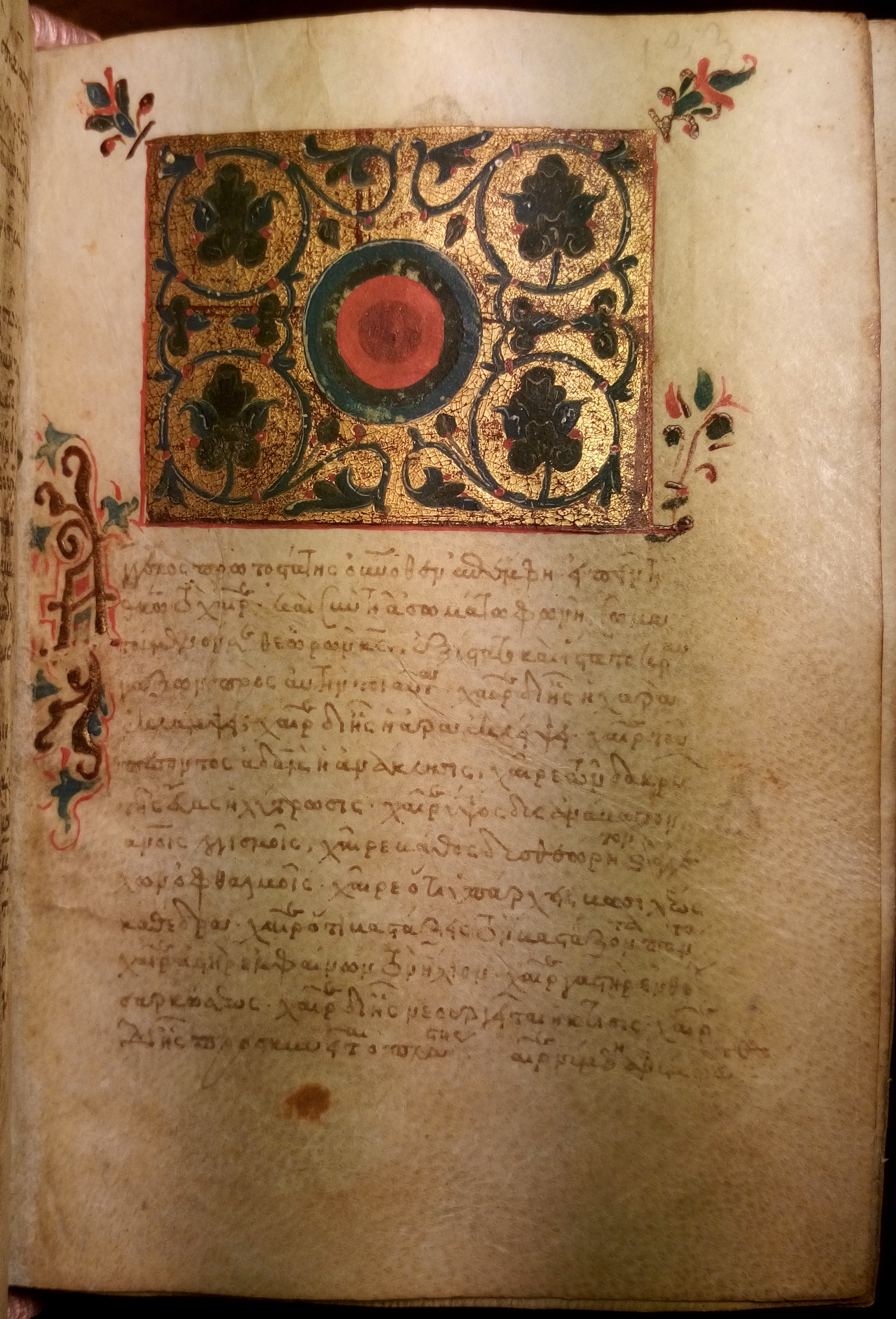
I find the script and ornament of the Turin Psalter difficult to localise. The style of its illustrations has some features that are untypical of Late Byzantine painting and that must be of Italian origin: the three (rather than four) nails in the Crucifixion scene and the gables with a round window (oculus) are paralleled, for example, in works of the Trecento painter Giovanni da Milano.
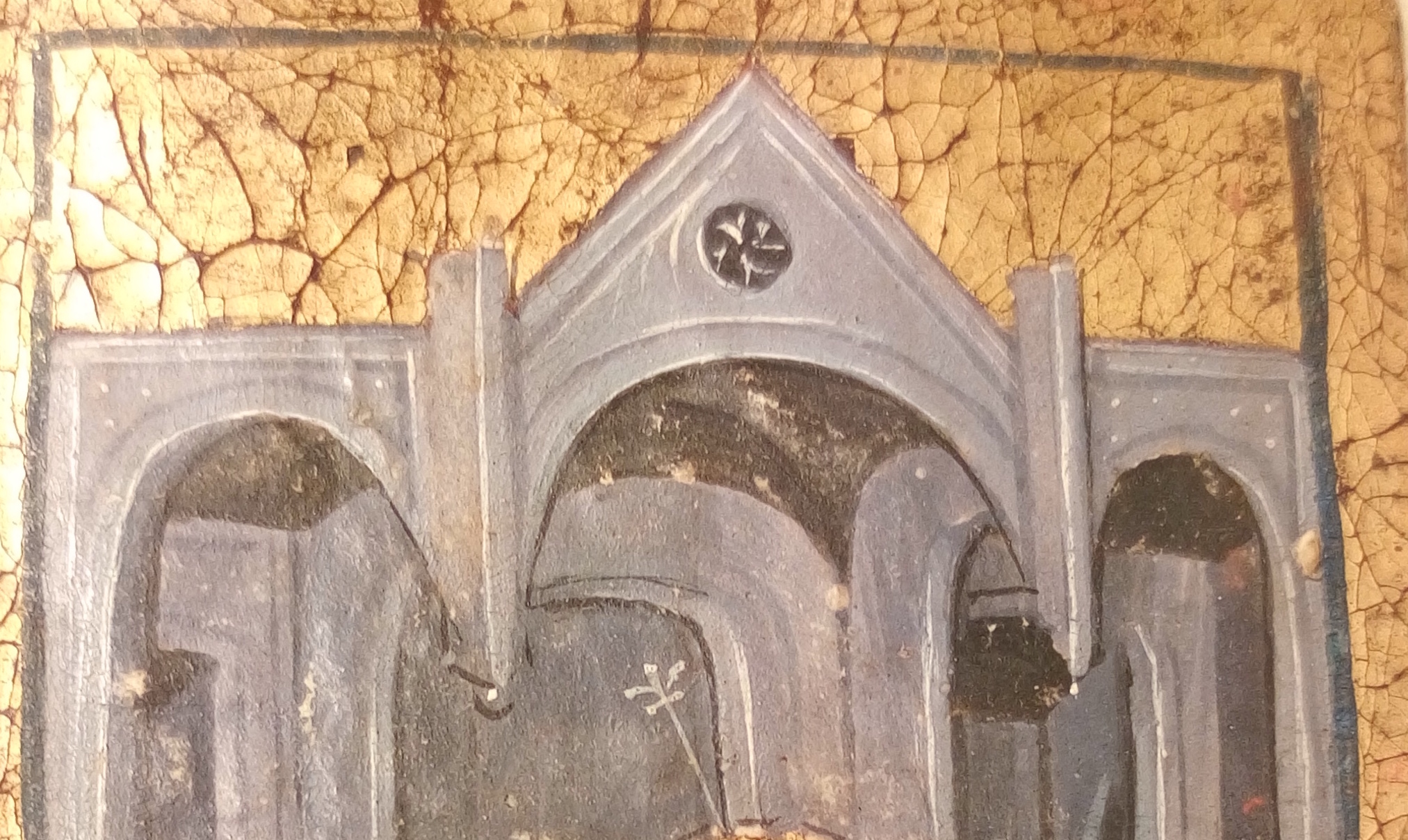
This suggests that the Psalter and its illustrations were produced in a Greek-speaking region ruled during the fifteenth century by Western Europeans: Crete, Rhodes, or Cyprus come to mind. One hopes that further study might clarify the precise origin and date of this interesting manuscript.
by Bradley Marsh, June 30, 2025
by Felix Albrecht, May 31, 2025
by Kyle Young, April 30, 2025
by Ippolita Giannotta, March 31, 2025
by Jonathan Groß, February 28, 2025
by Malte Rosenau, January 31, 2025
by Ippolita Giannotta, December 16, 2024